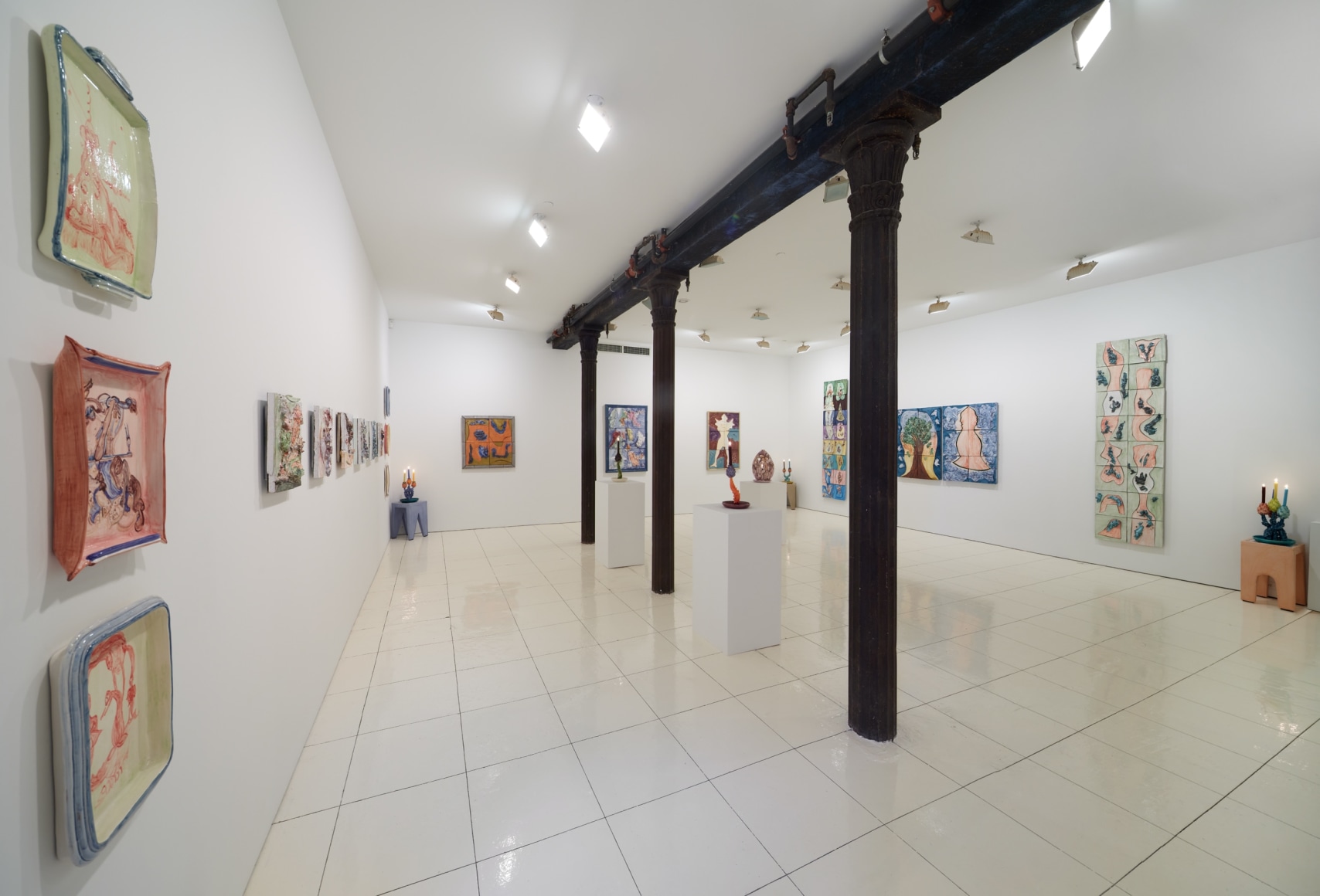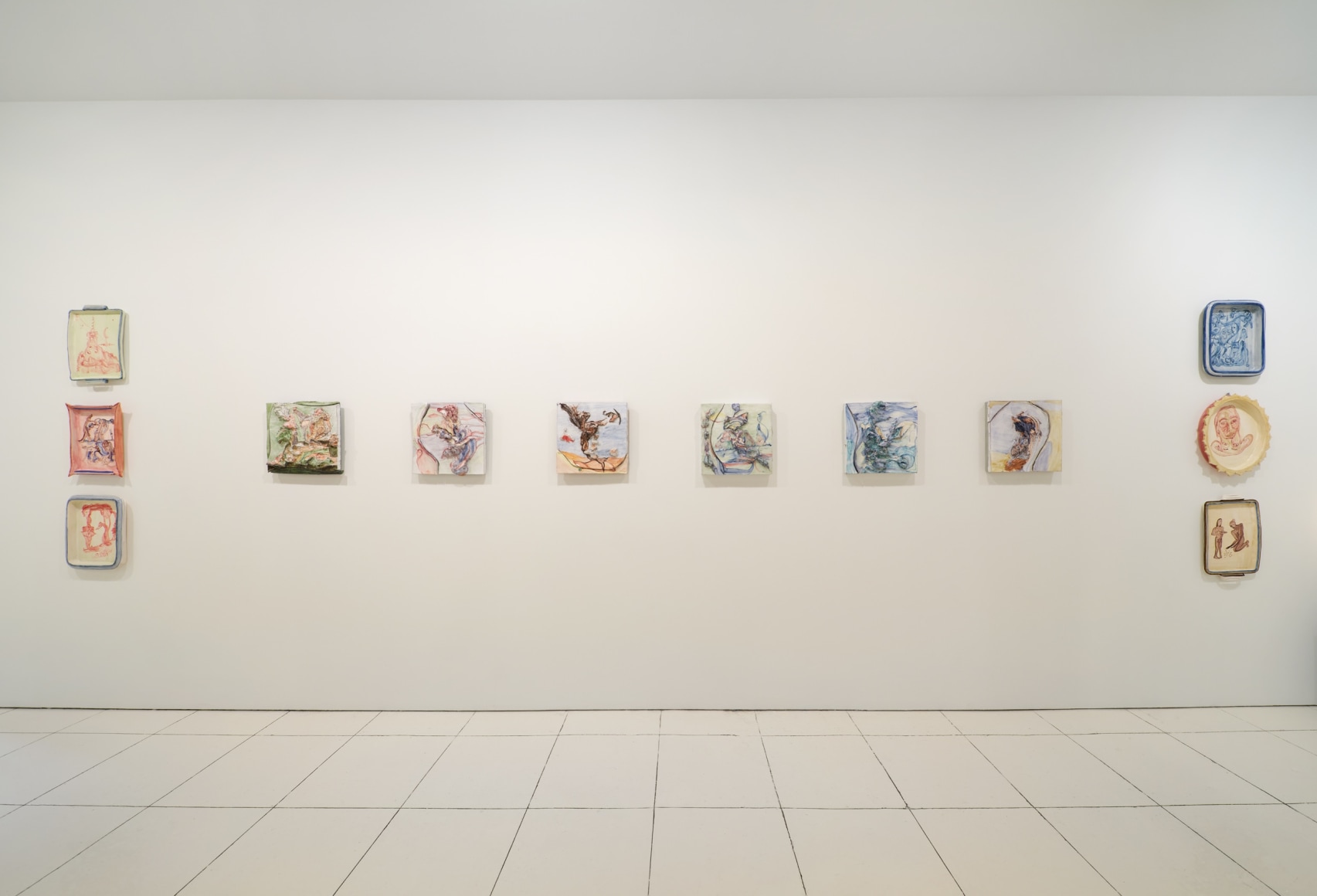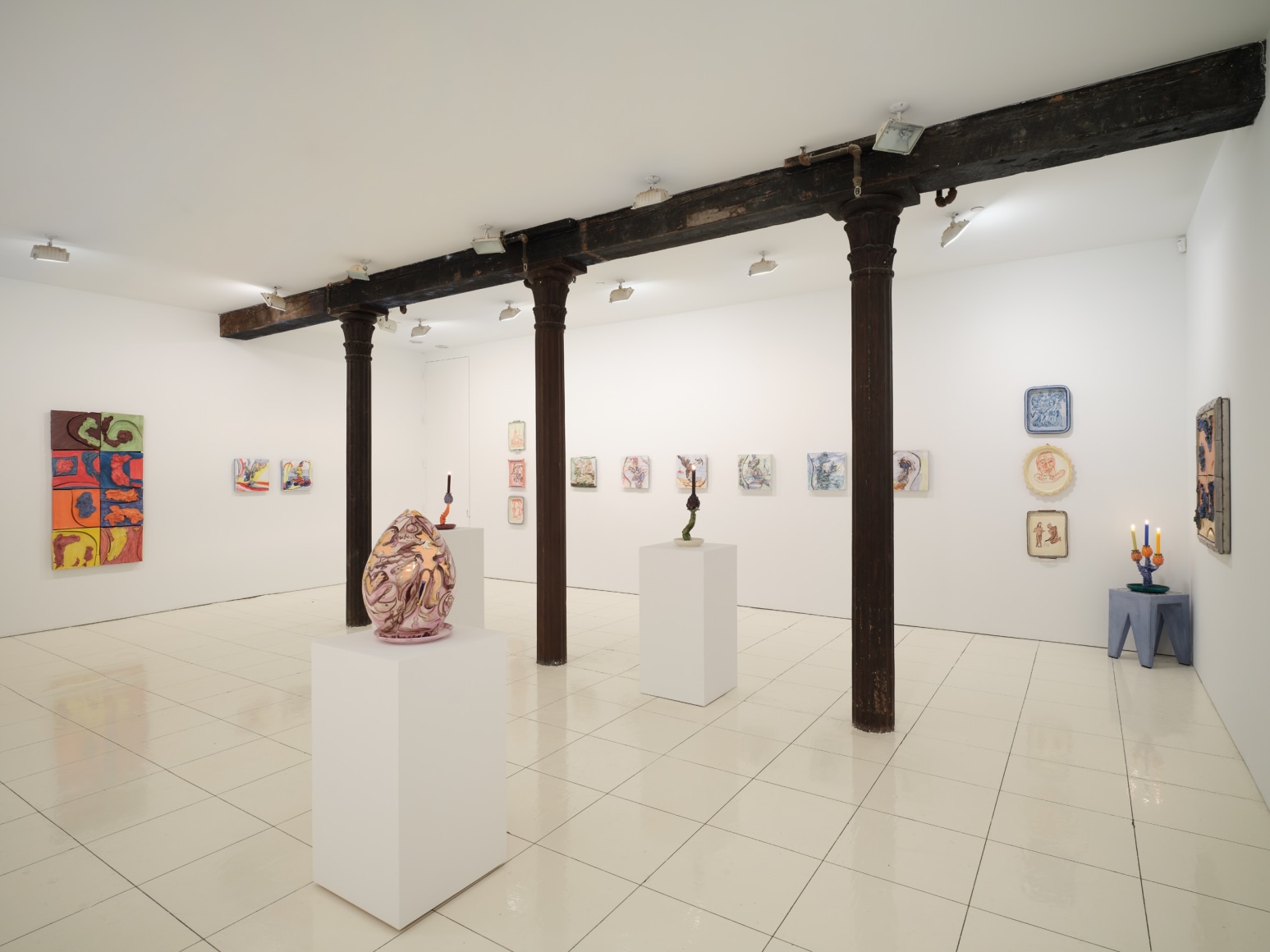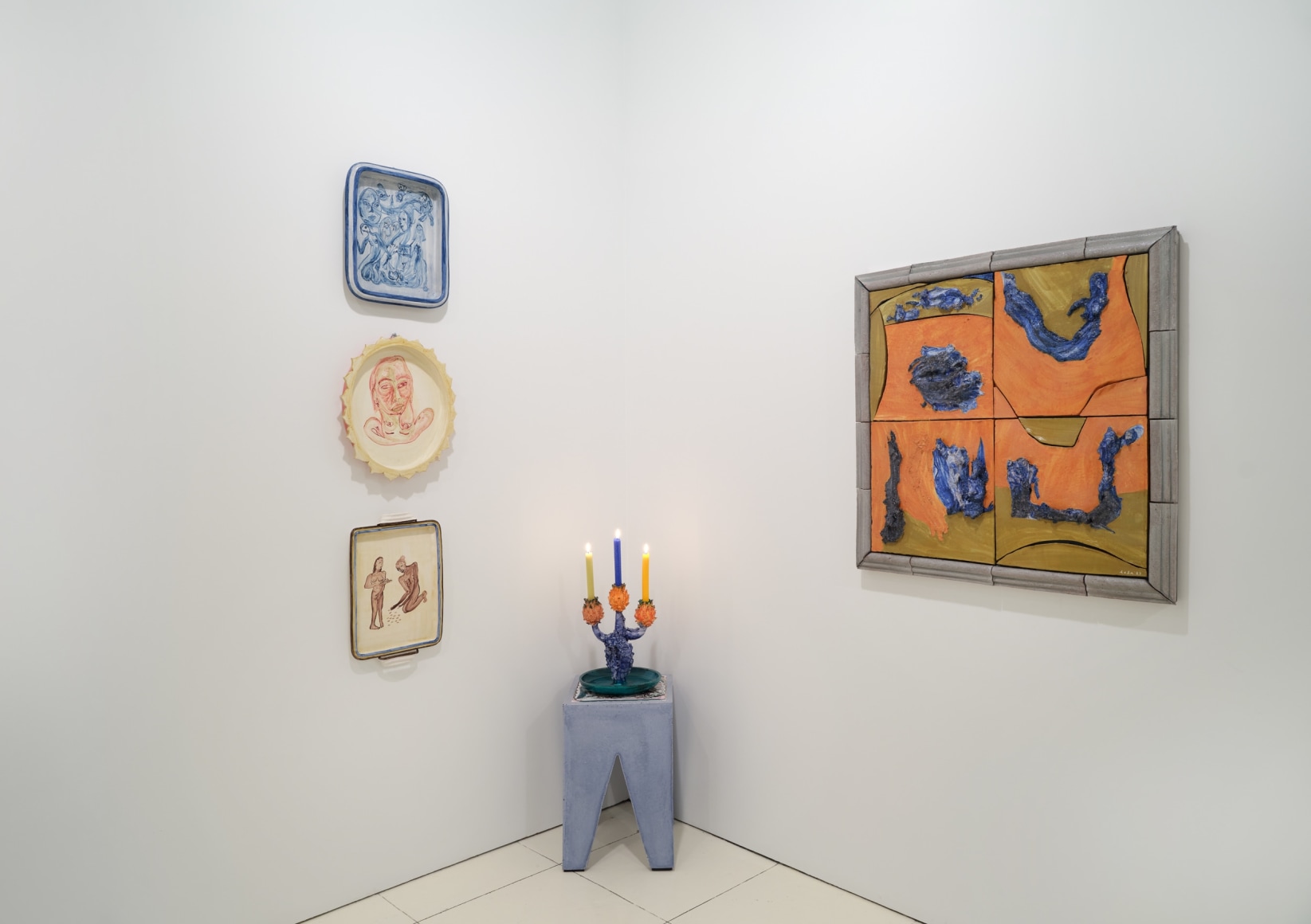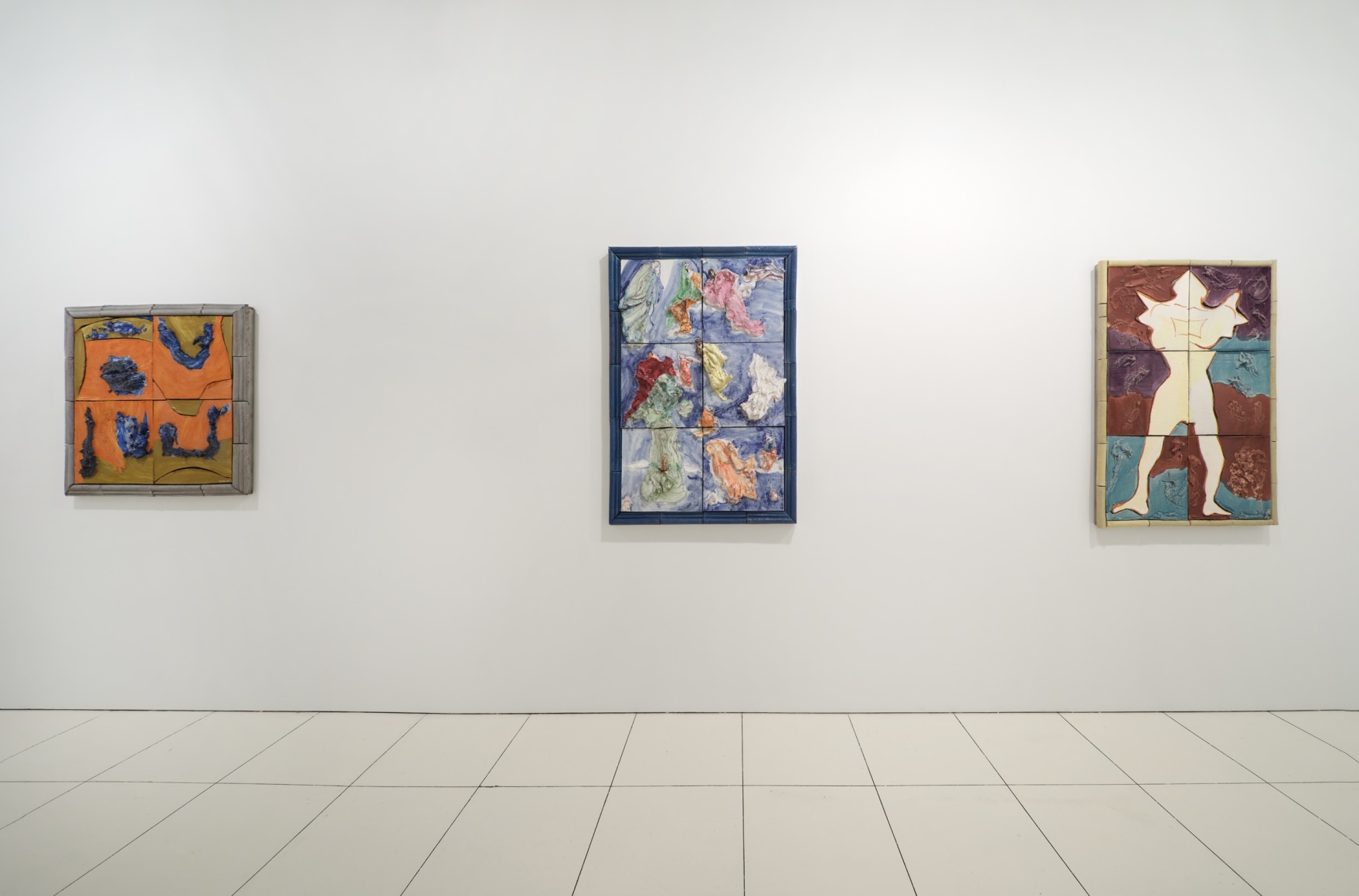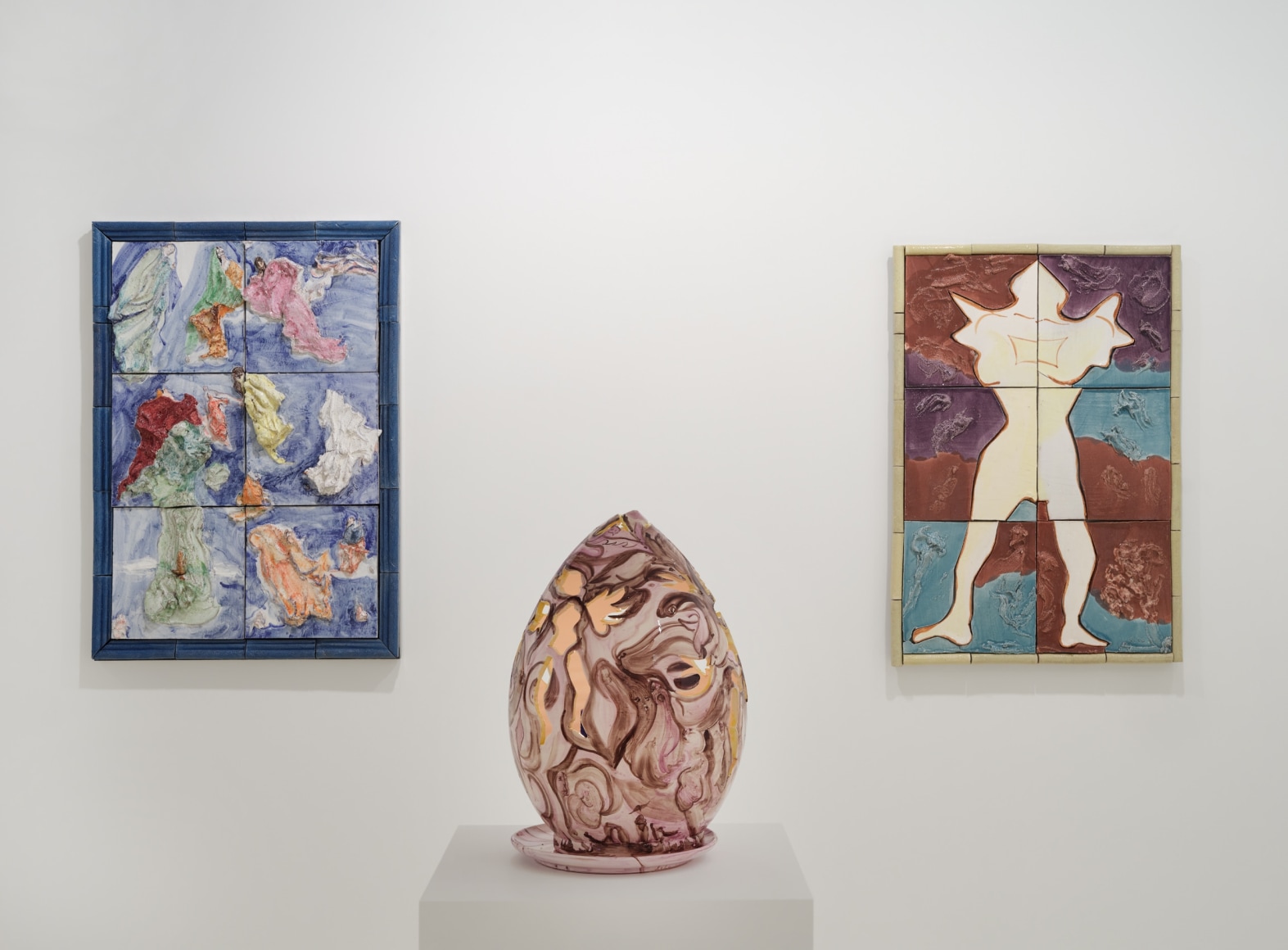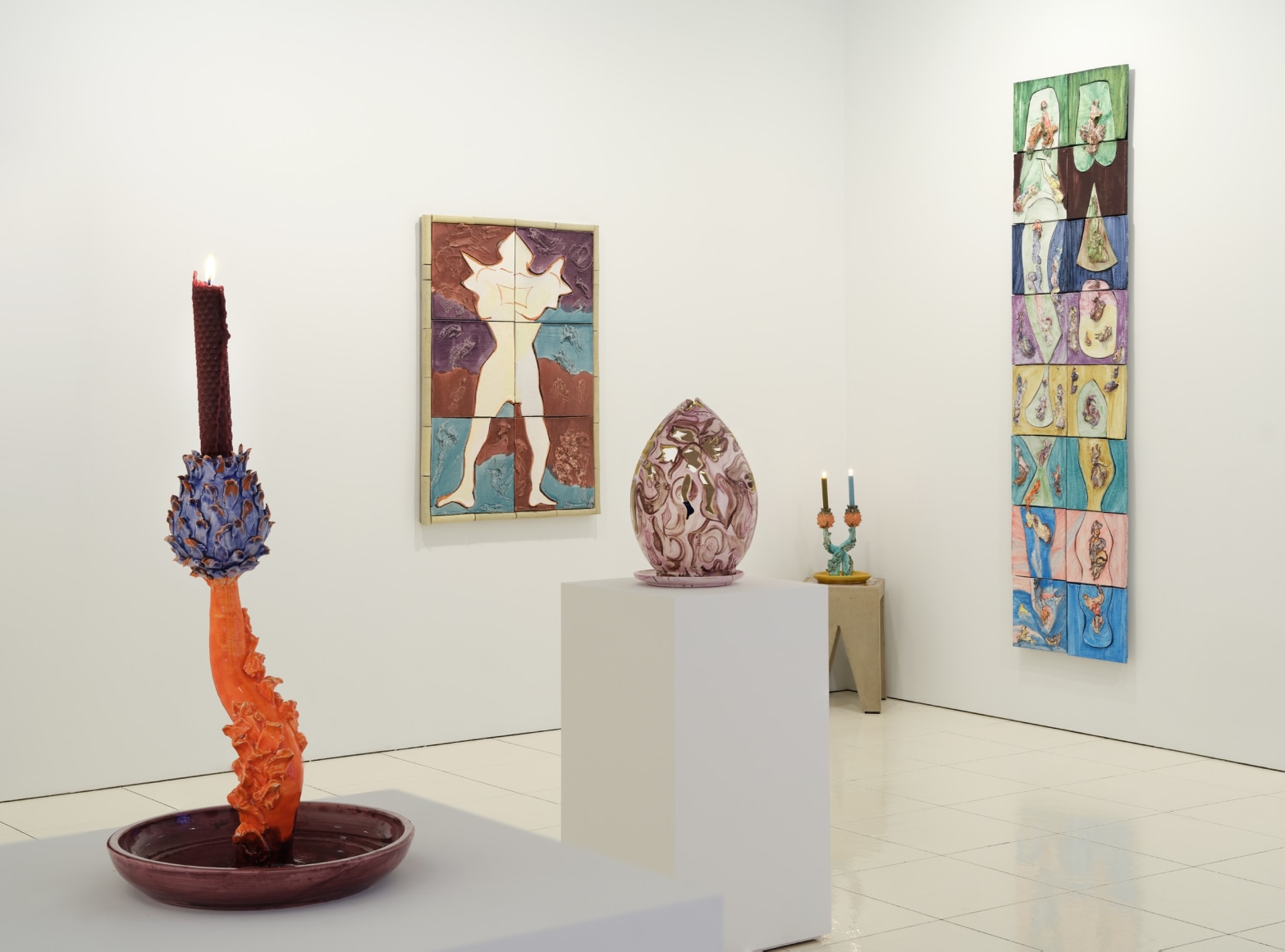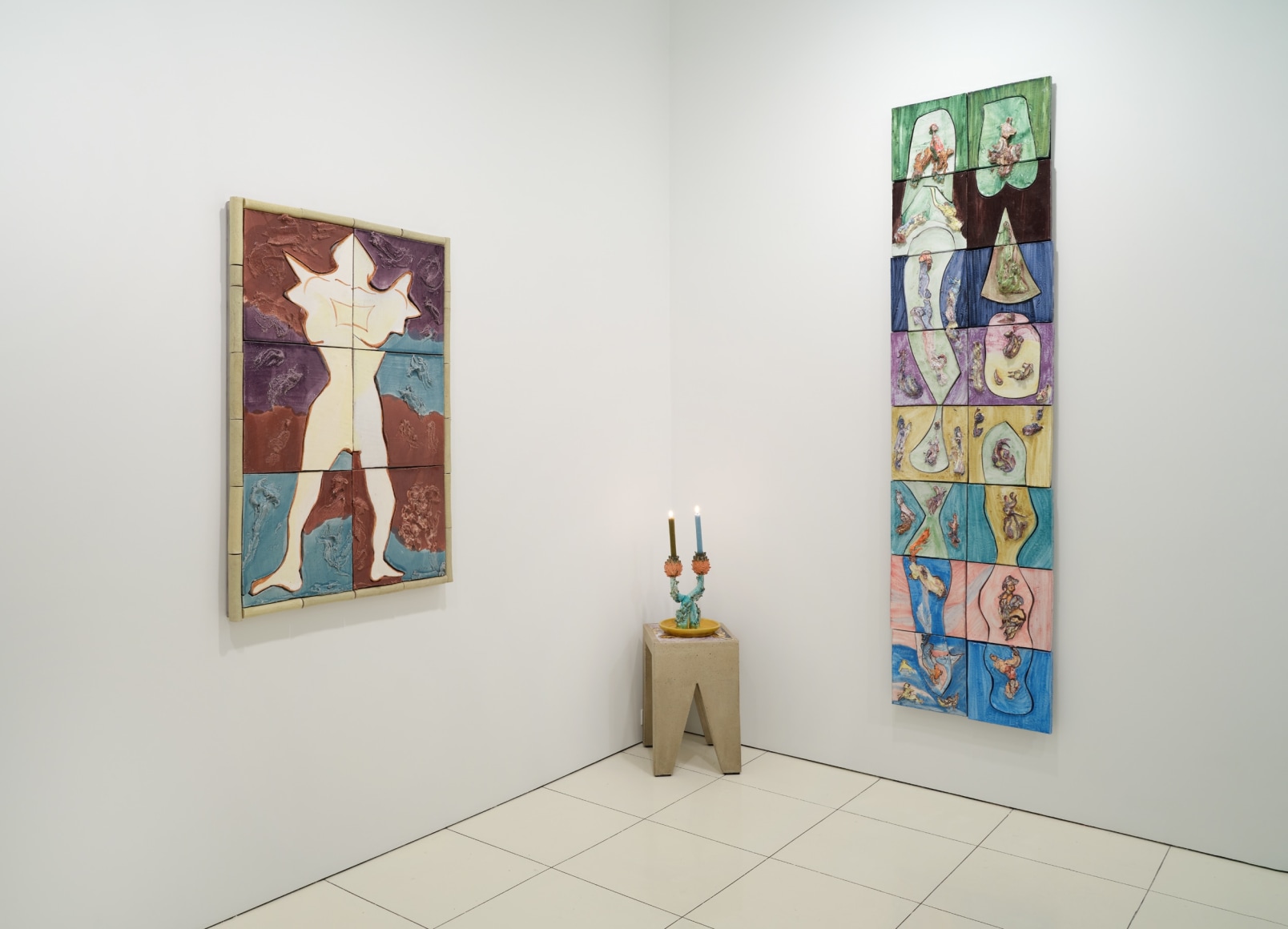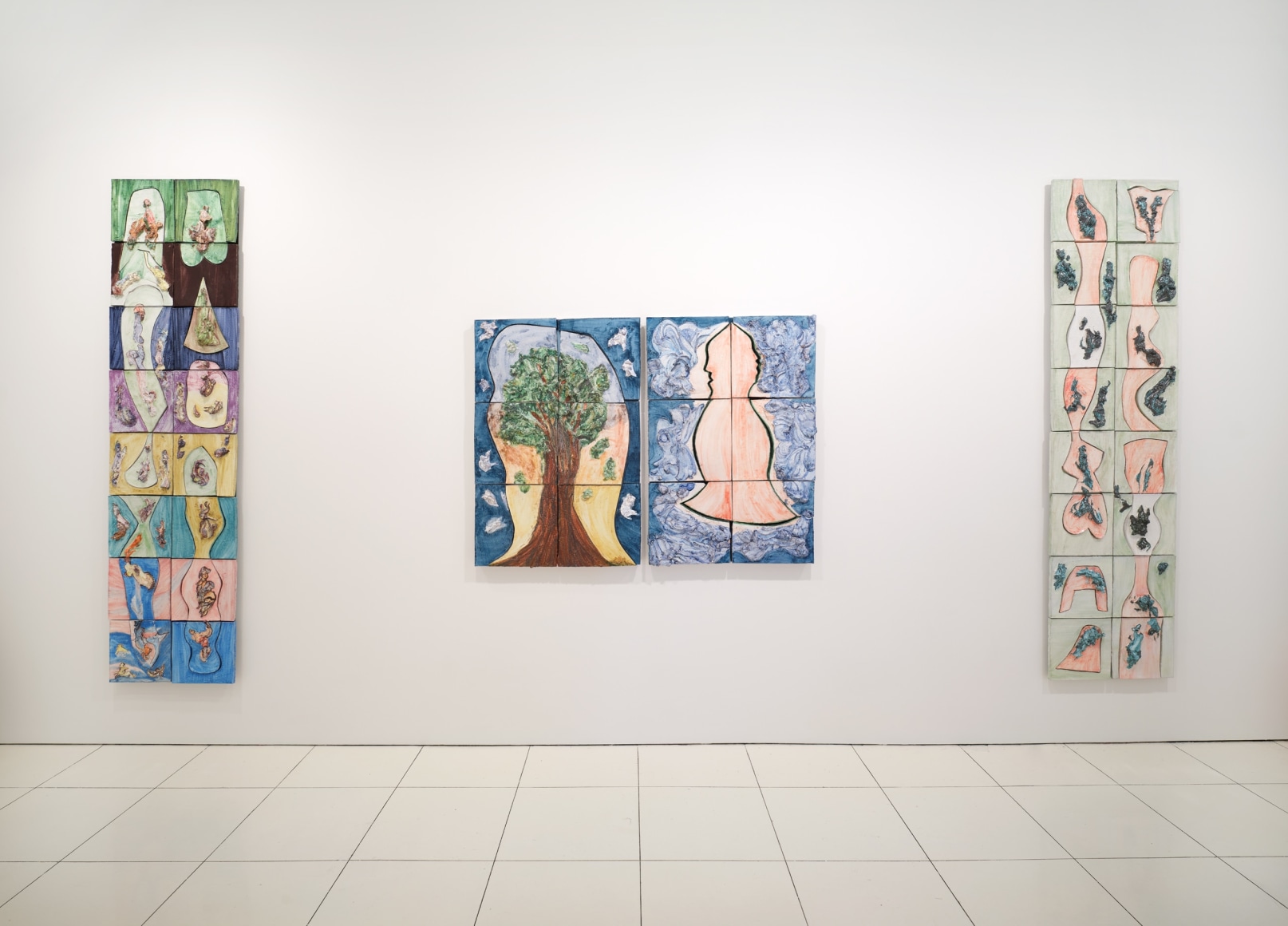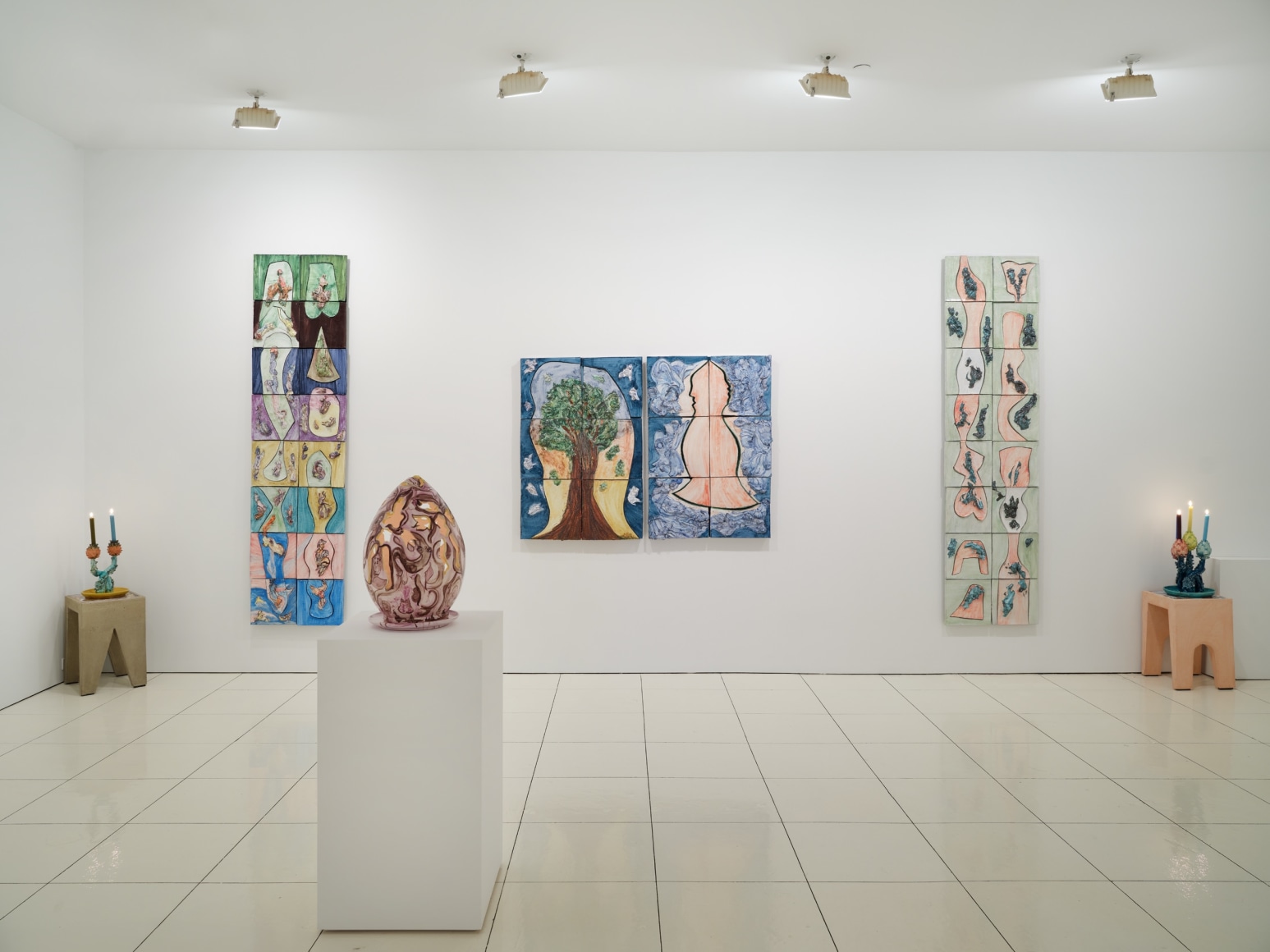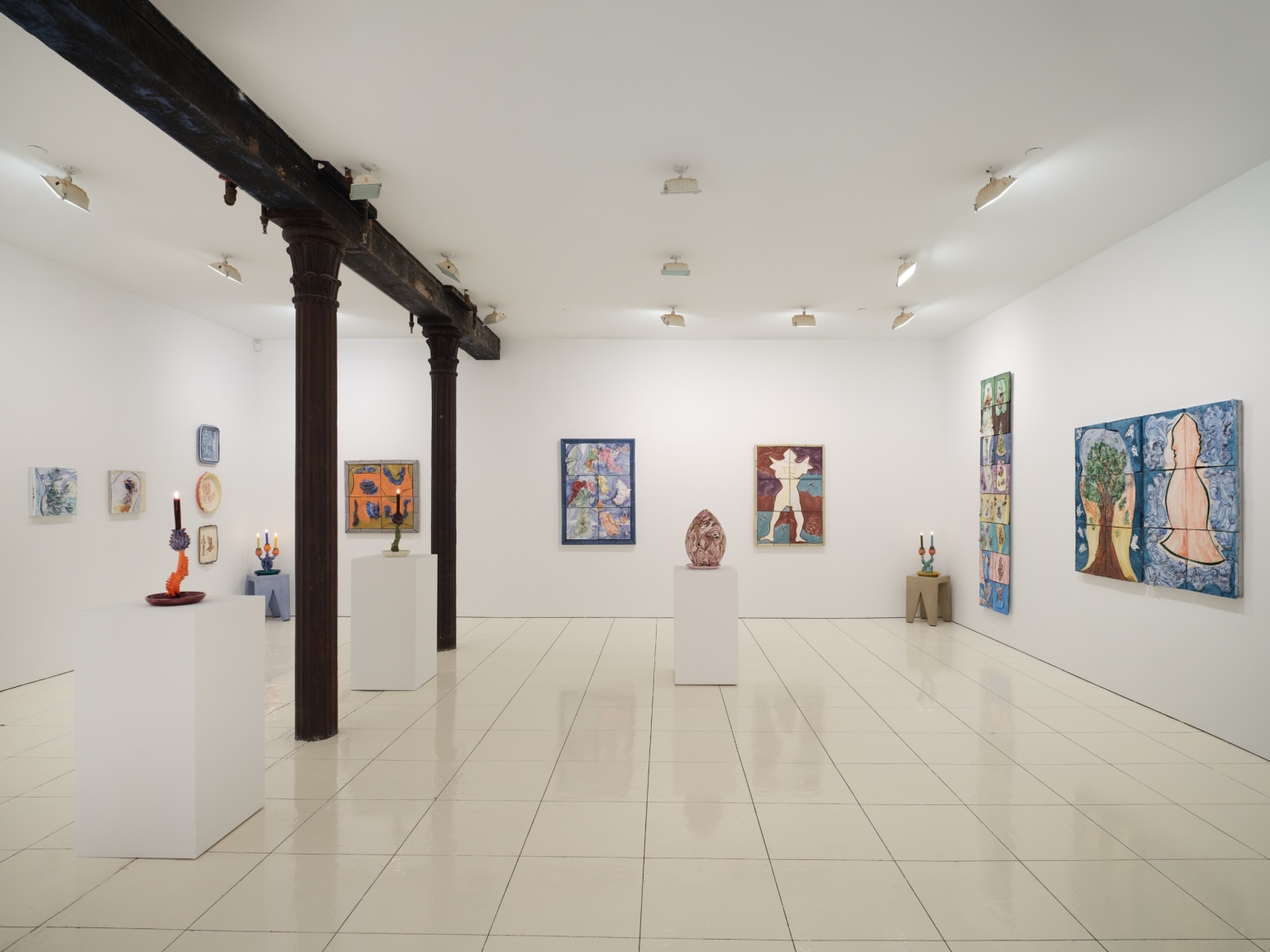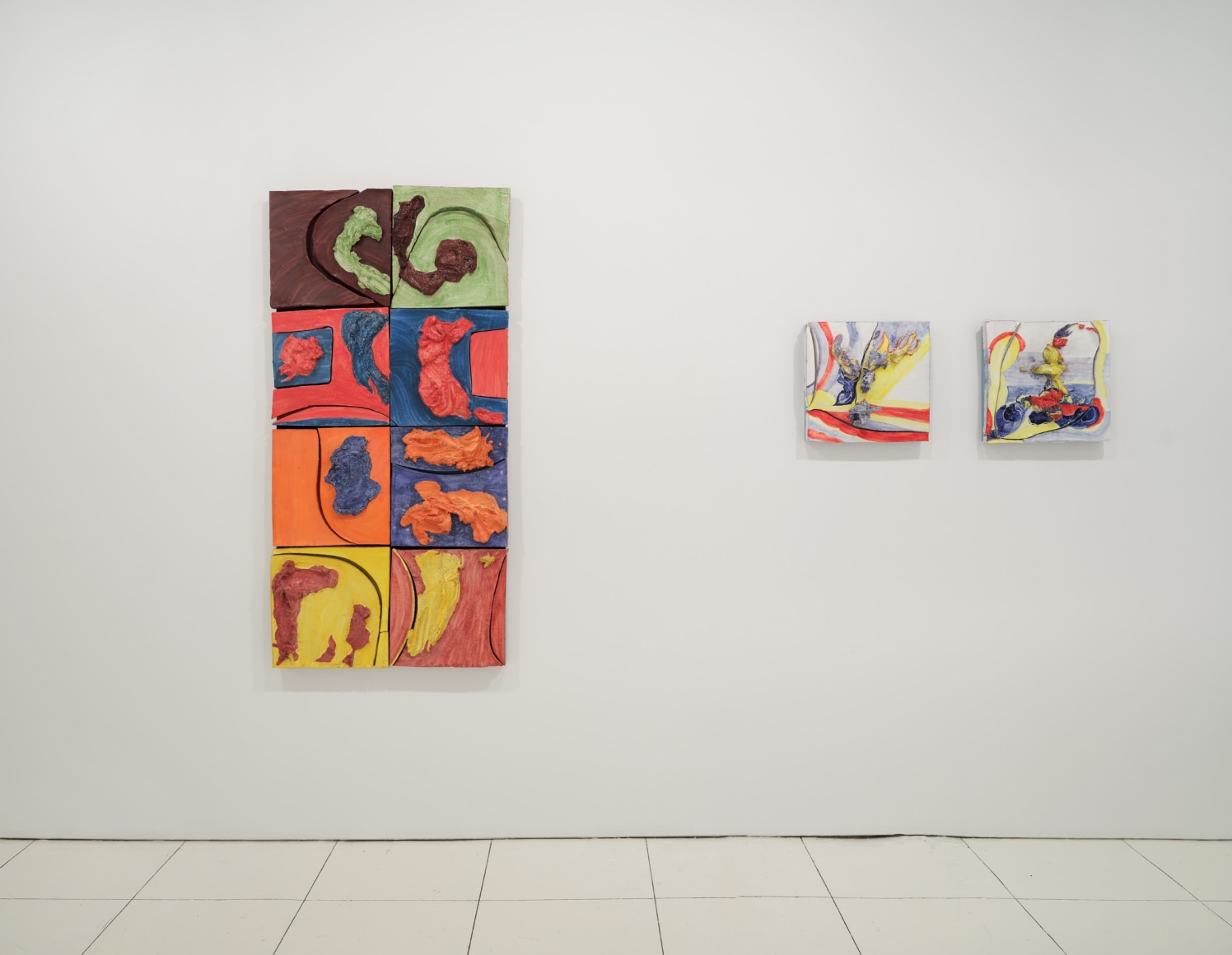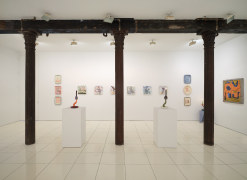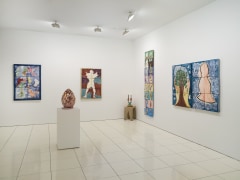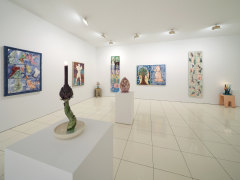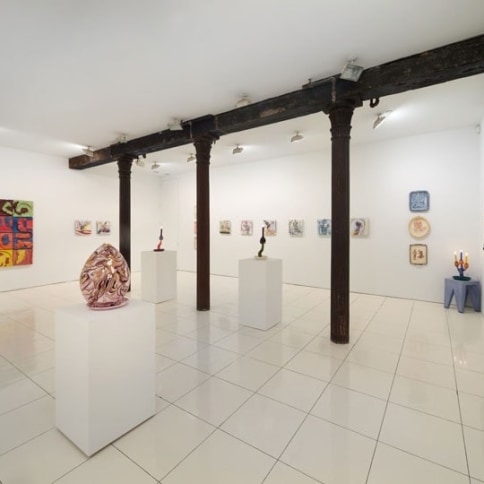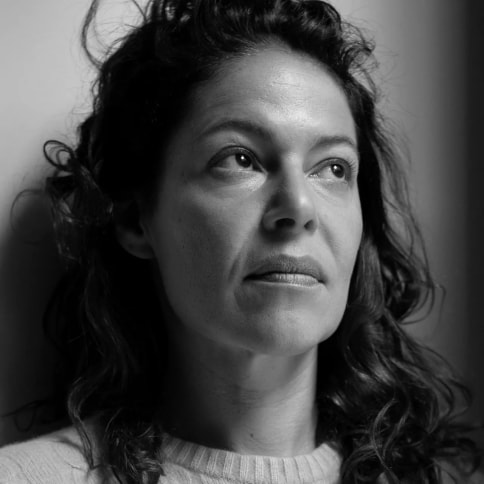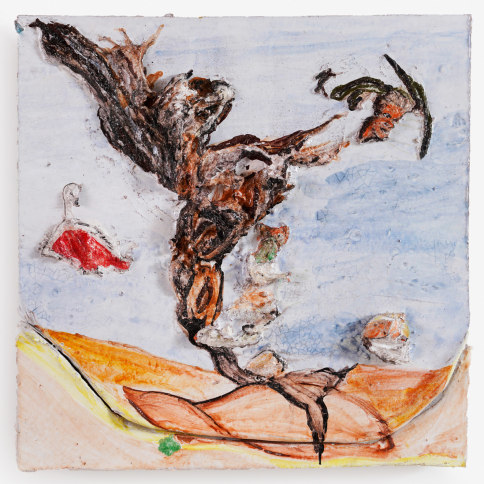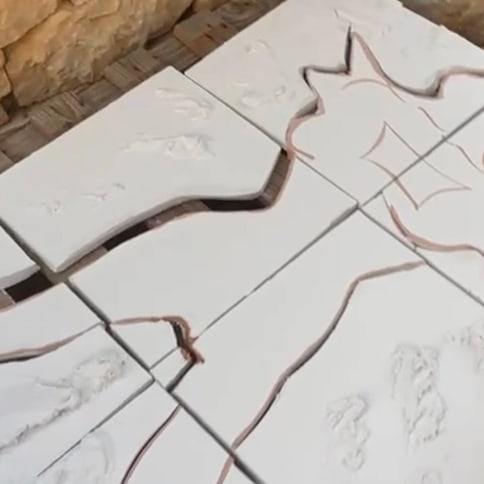
Vito Schnabel Gallery is pleased to announce Cirica, an exhibition of new relief ceramic paintings and sculptures by Lola Montes. The exhibition opens November 16th at 43 Clarkson Street in New York.
Over the last two decades, Lola Montes has consistently embraced cross-medium experimentation, applying her vision to painting, sculpture, and film. With her new ceramic works on view in Cirica, the artist debuts the outcomes of her most recent material research in collaboration with local artisans in Sicily, where she has lived since 2018.
Working as an American in Europe, Montes offers distinctive narratives steeped in the history, visual art, literature, and mythologies of the Old World. Her personal imagery and technique invite viewers to consider her work as a path into the multiple strata of human experience over time — to connect to the distant past and recognize that the present day is not an end in itself.
“When European artists came to America they were trying to forget the past. There is a plethora of imagery that is very much alive in all art, and it is ancient art that brings me into this present moment,” says Montes. In the new body of work on view in Cirica, Montes draws upon the picturesque, Homeric myths of Sicily; indeed, the exhibition takes its title from the island’s Cirica peninsula, where fishermen gather to collect antique shards of Roman and Greek ceramic from the sea. Cirica is known in mythology as the home of Circe, daughter of the sun god Helios. Described in Homer’s Odyssey as the enchantress of Ulysses and the power behind the transformation of his ship’s crew into swine, Circe was known for her ability to metamorphose human beings into other life forms, either as punishment or as a means of revealing their true inner nature to themselves.
The artist’s wall reliefs channel a direct relationship between the idiosyncratic works of Lucio Fontana and the classical ceramics of Luca della Robbia. Her focus on ceramic as a primary material celebrates the alchemical qualities of molded, glazed, and fired material, seeing opportunity in clay as an agent of transformation; from malleable mud into fixed form, from pigment and water into a solid painting. Montes’s inner research connects the artist in both material and narrative terms to Homer’s era: the ancient Greeks worked from the same primitive raw materials that she channels in Cirica.
Montes’s manifestation of these relief paintings is encoded with deeply personal imagery that relates to both her own history and the wider historical record. Shaped by a uniquely feminine awareness, her work marries the recognizable (figures from her own early childhood drawings can be easily deciphered) with the wholly enigmatic. The artist states that the paintings and sculptural works in Cirica “turn upside down an ancient masculine approach to the medium of ceramic to suggest feminine contradiction.” Through her free and skillful handling, these objects achieve a Circe-like, transformative quality that ensorcells the viewer.
About the Artist
Lola Montes (b. 1981, New York, NY) is a multidisciplinary artist whose work consists of painting, sculpture, film, and design. She received her BFA in 2008 from The Cooper Union for the Advancement of Science and Art and is based in Sicily and Milan, Italy.
Montes has exhibited with the Ludwig Museum, Koblenz, Germany; Tripoli Gallery, Wainscott, NY; Vito Schnabel Gallery, New York, NY; Nino Mier Gallery, Los Angeles, CA; Nilufar Gallery, Milan, Italy; Ileana Tounta Contemporary Art Center, Athens, Greece; Zuecca Projects at the Venice Biennale, Venice, Italy; and The Hole, New York, NY, among others.
She serves on the Board of Advisors for Anthology Film Archives and has directed music videos for Lou Reed, Benjamin Clementine, and Nike. Montes has also directed short films on fellow artists Luigi Ontani, Rene Ricard, Jonas Mekas, and Vahakn Arslanian, and Julian Schnabel. Her design work includes textiles for Alice & Olivia, Zac Posen, and Max Mara and album covers for John Frusciante.
Montes’ practice draws on metaphors from her own mythology. She works with the unconscious to create psychic images that consist of timeless patterns, creating an exquisite order. By painting the subject’s spirit, she translates a primitive timelessness into other realities.



